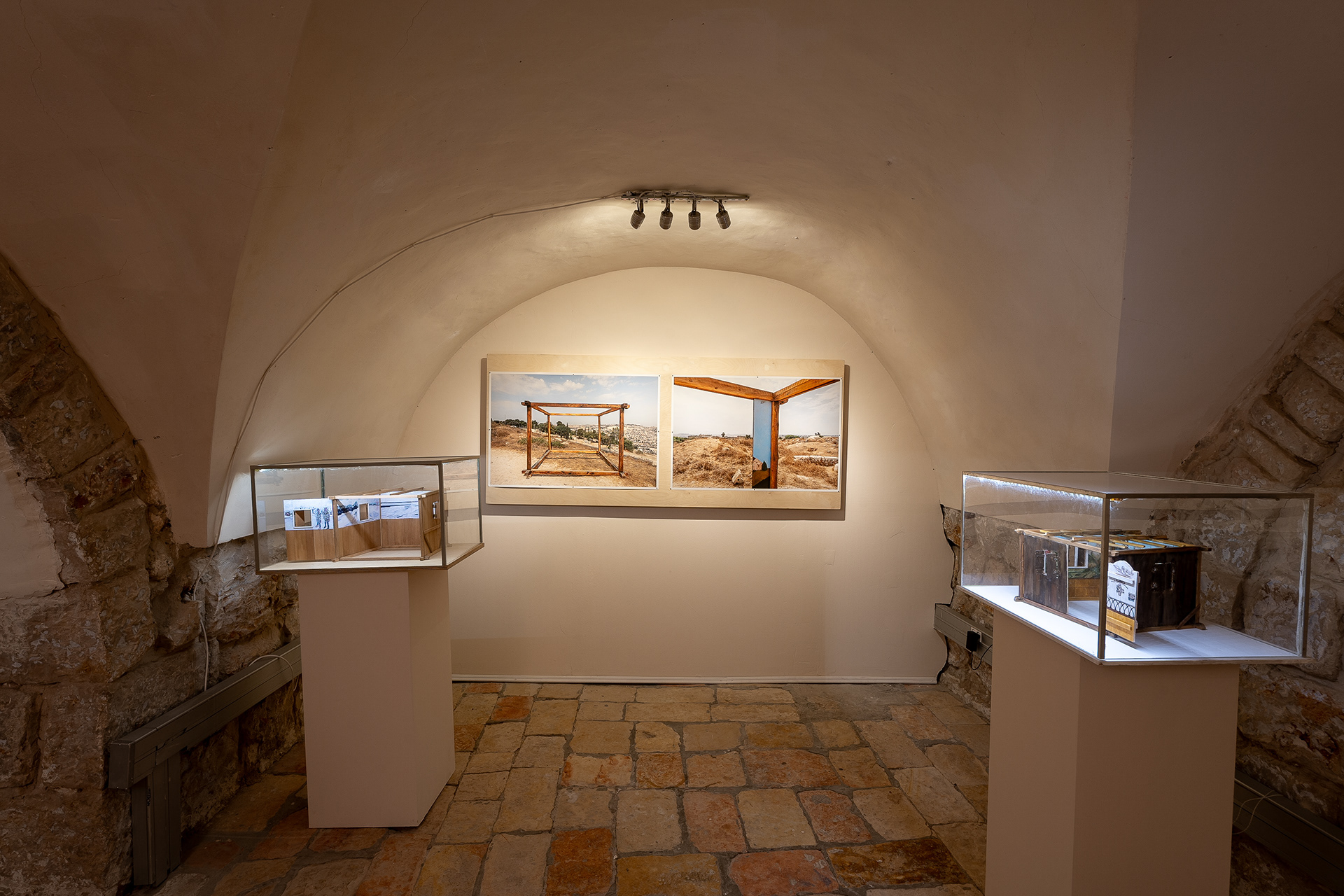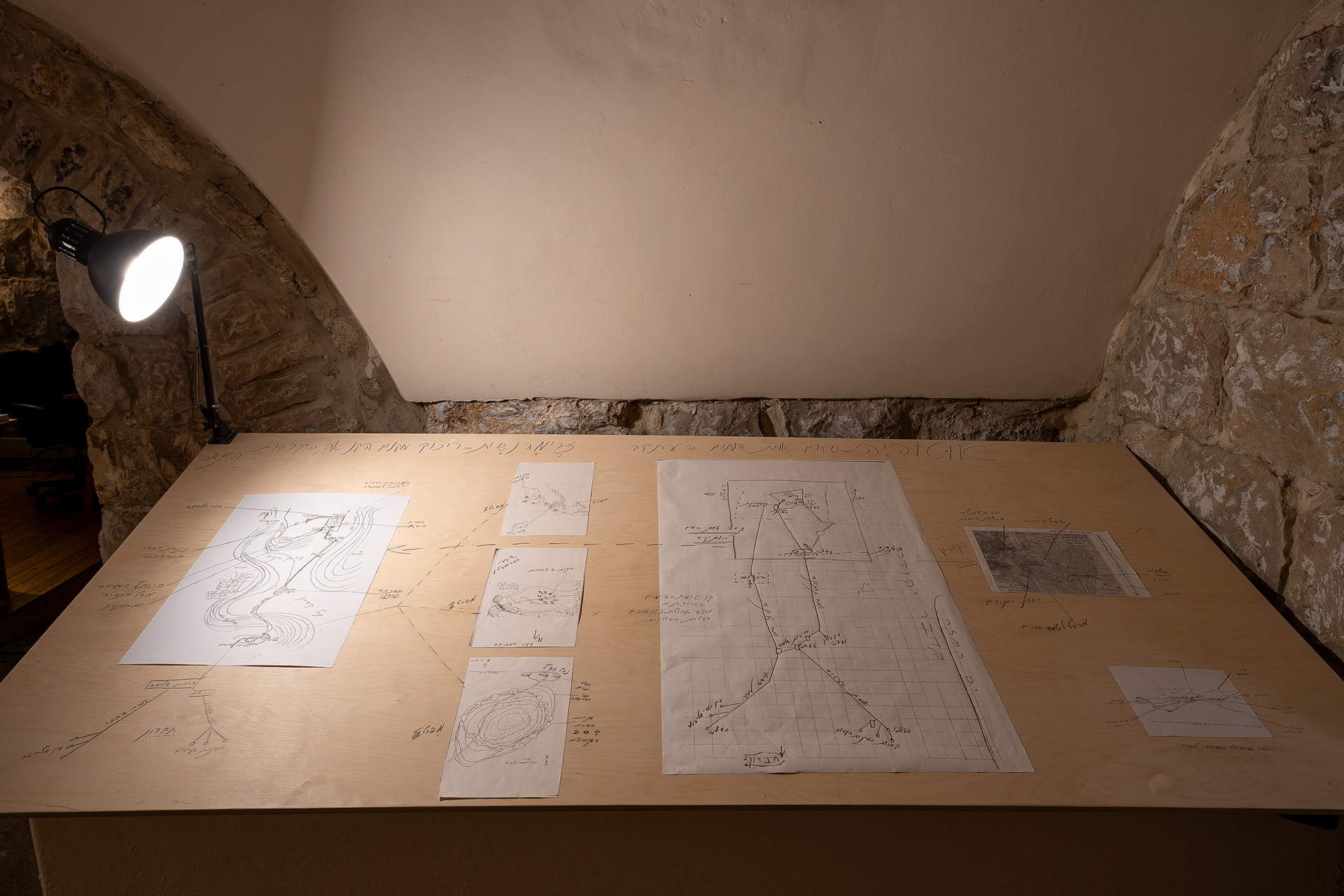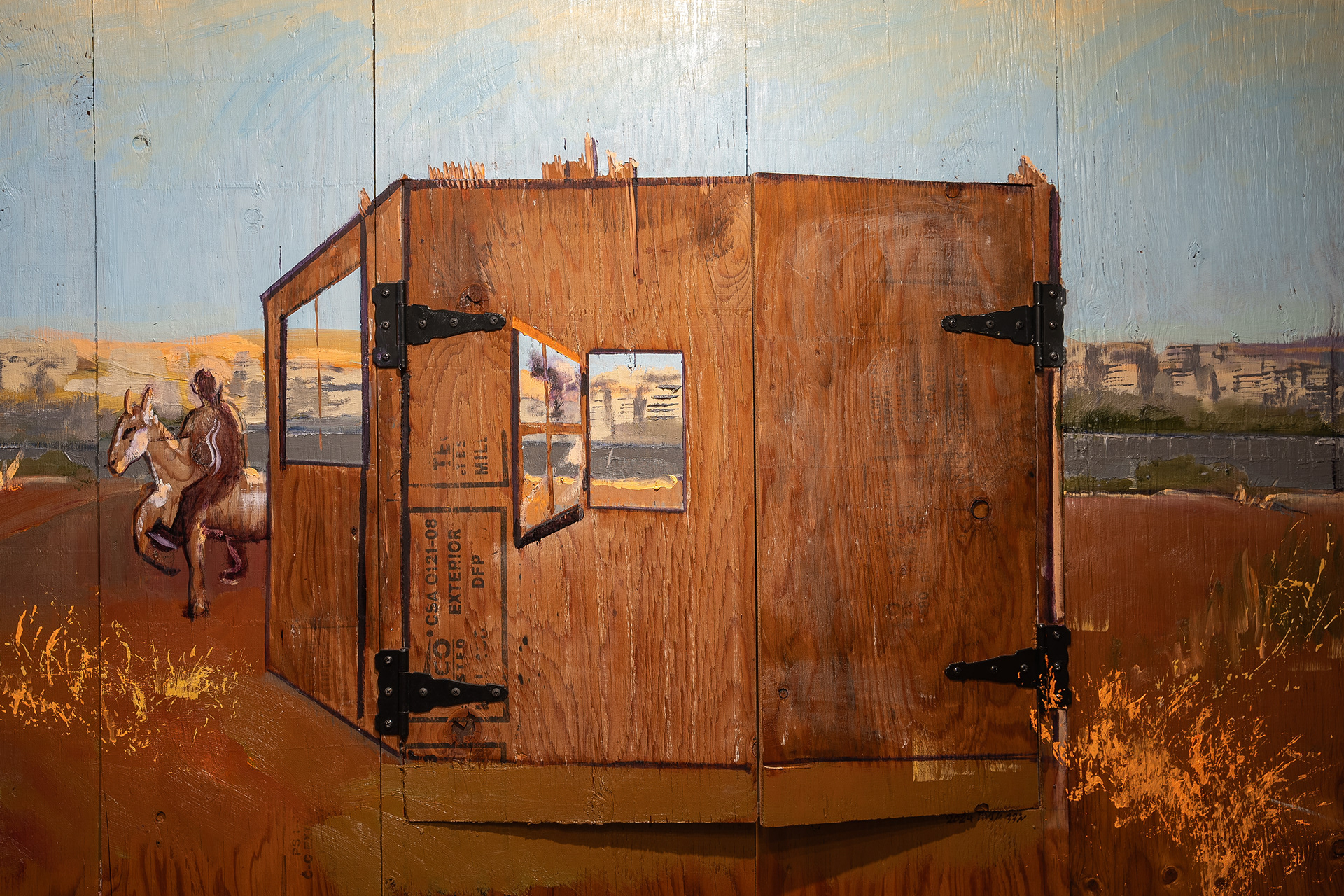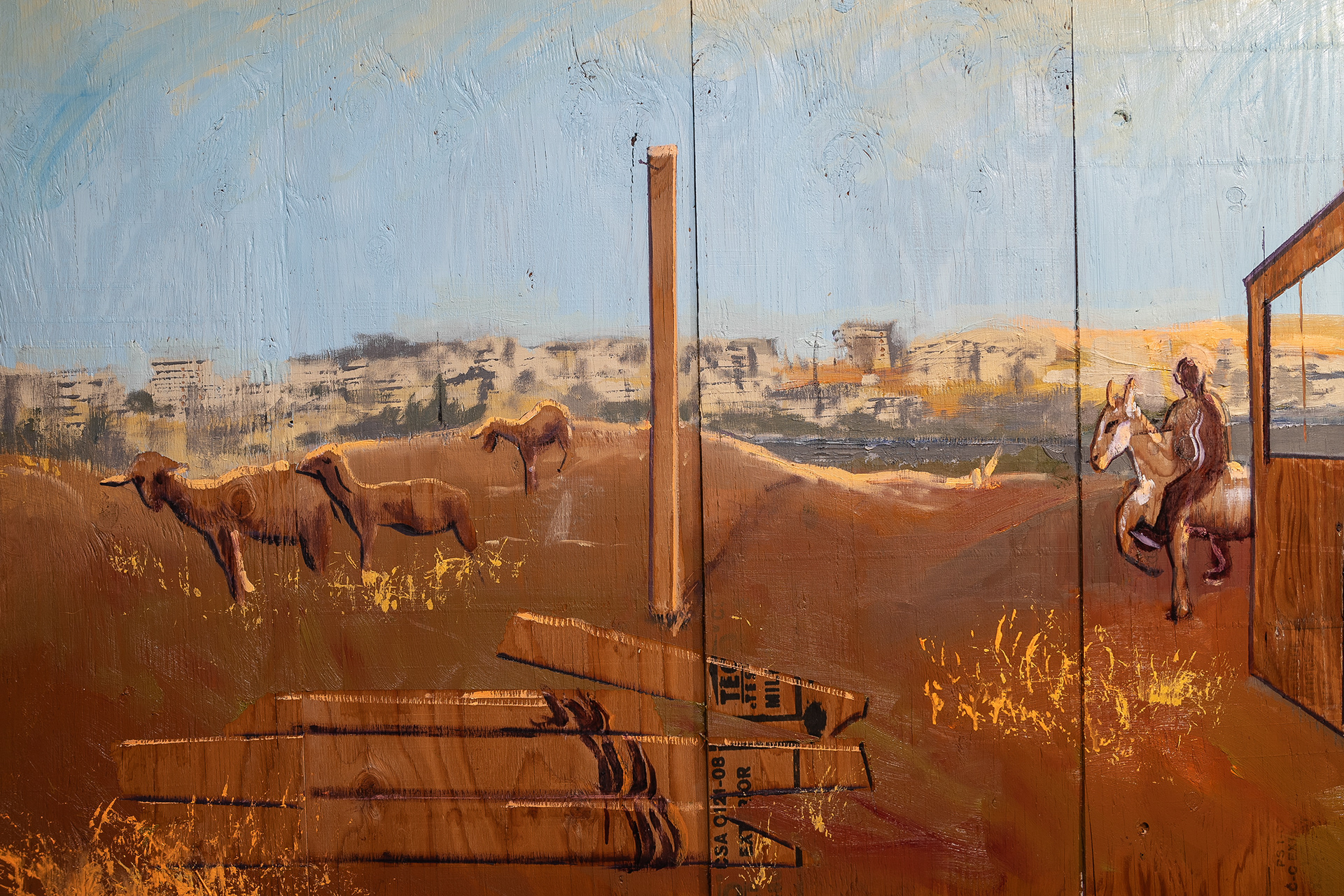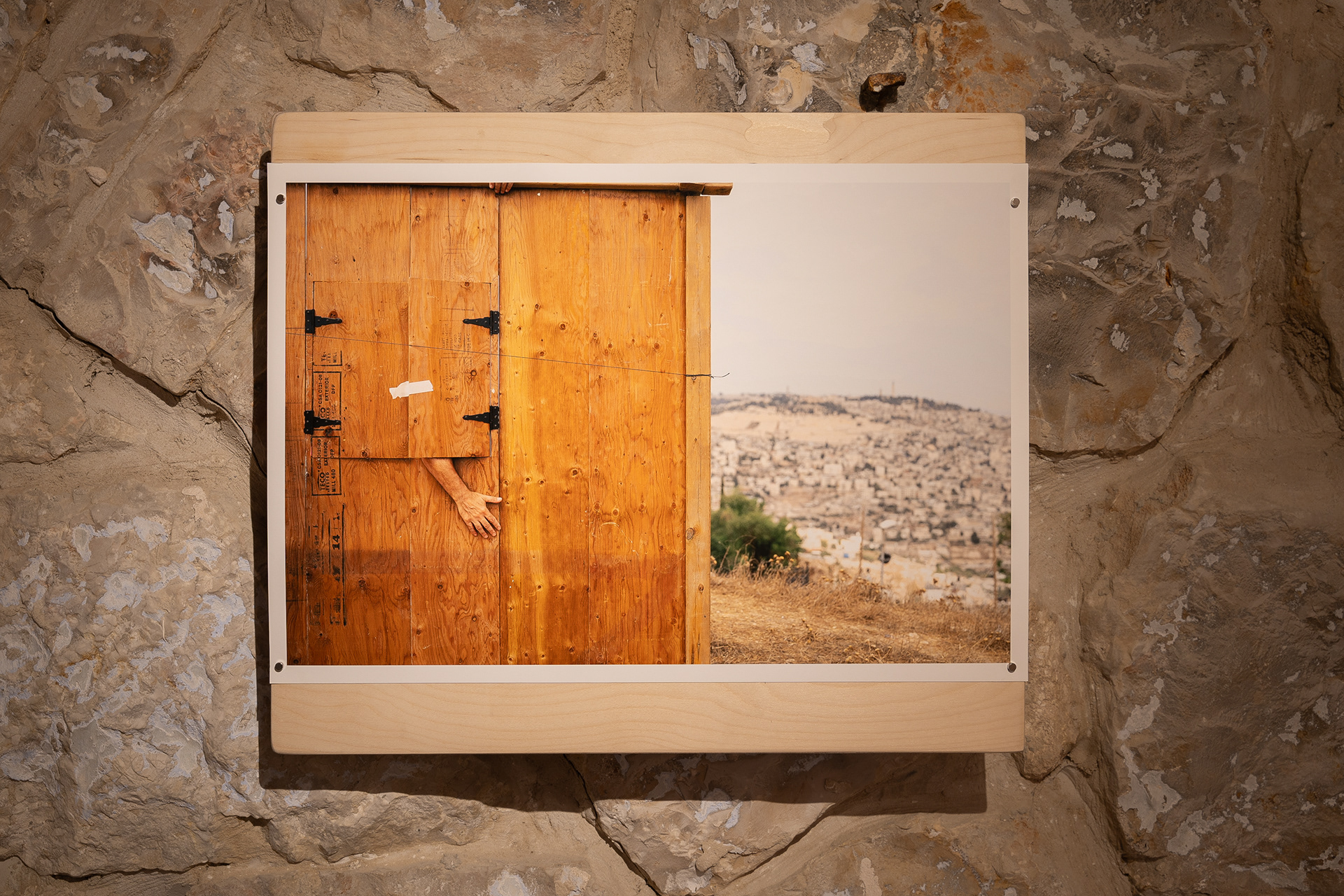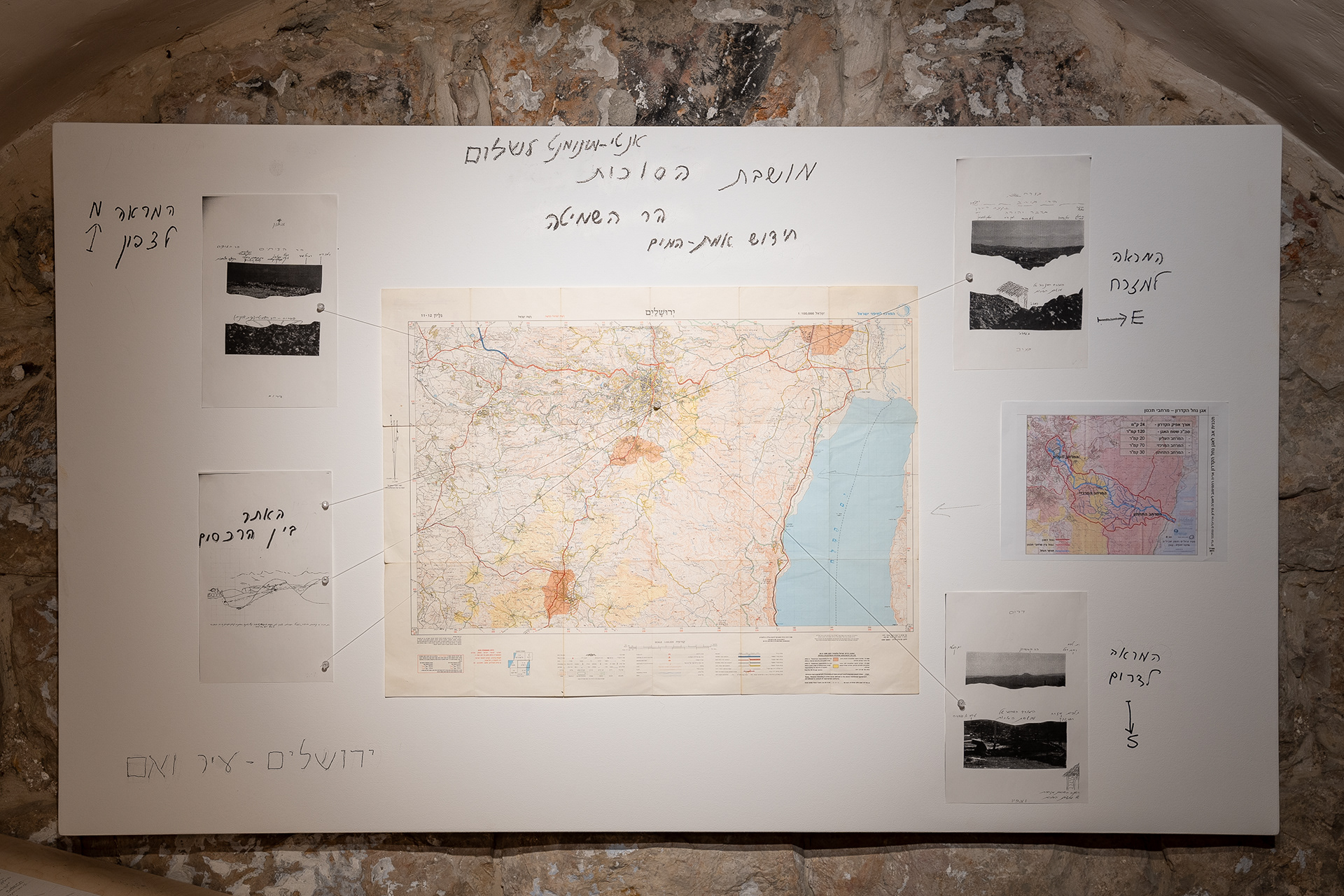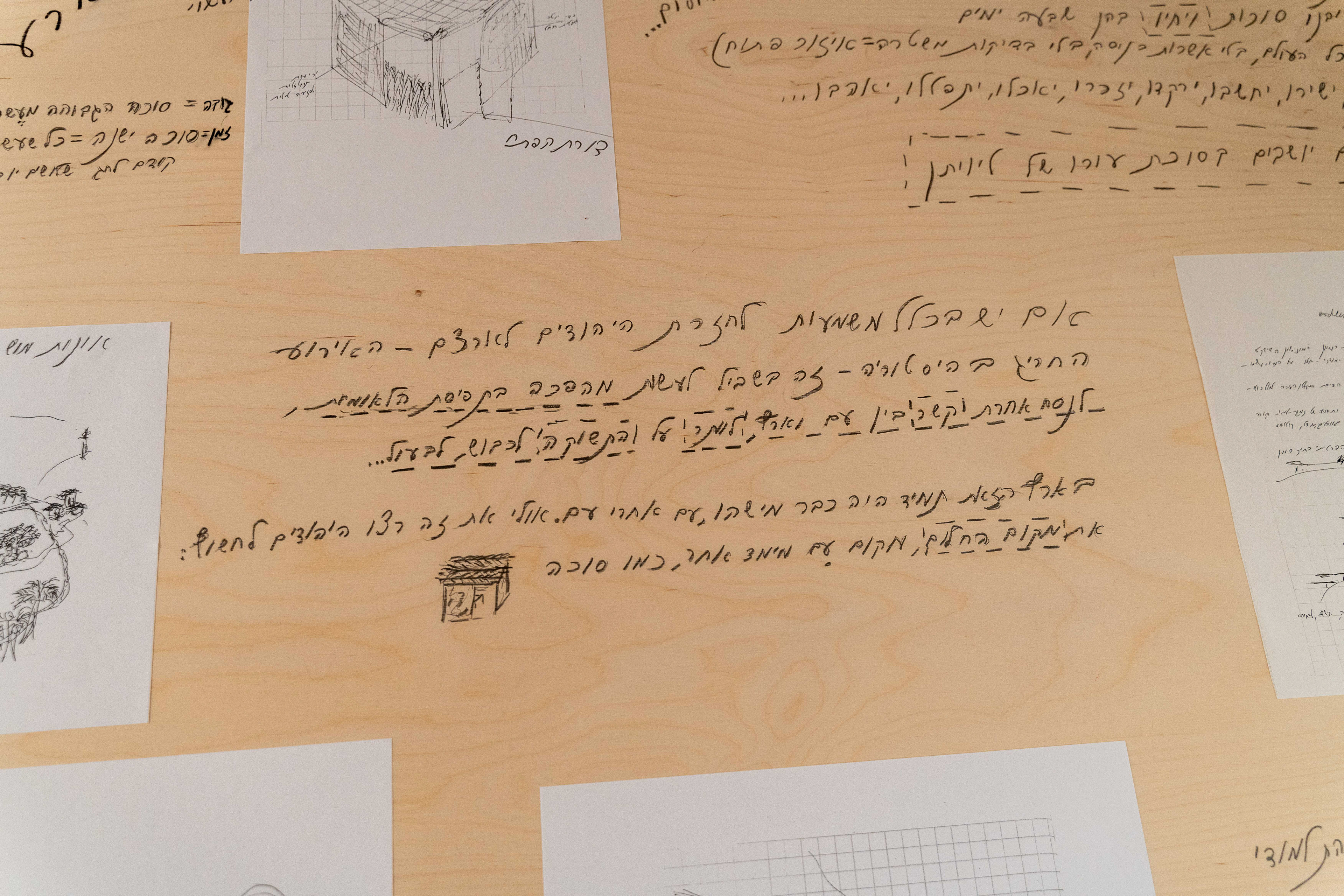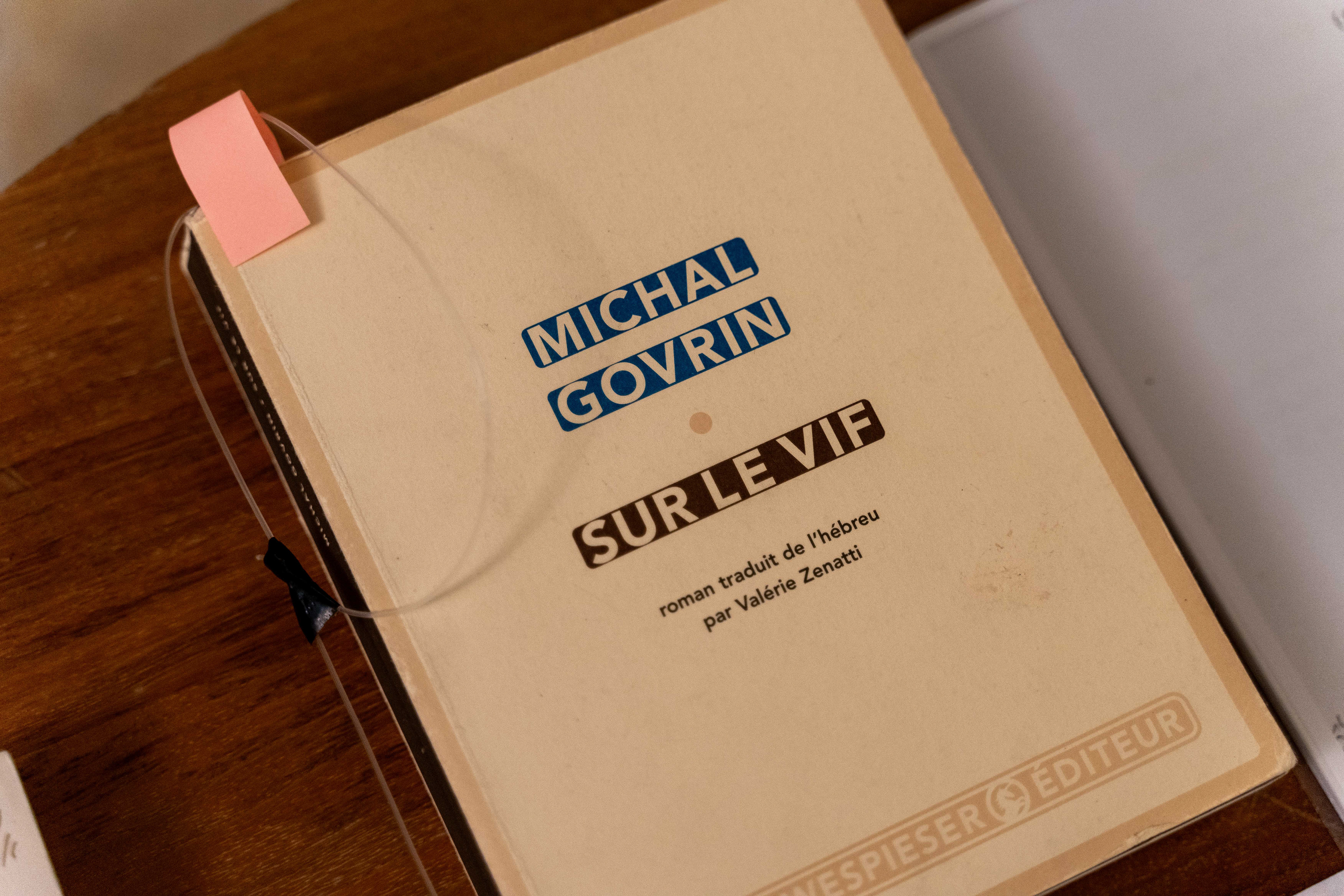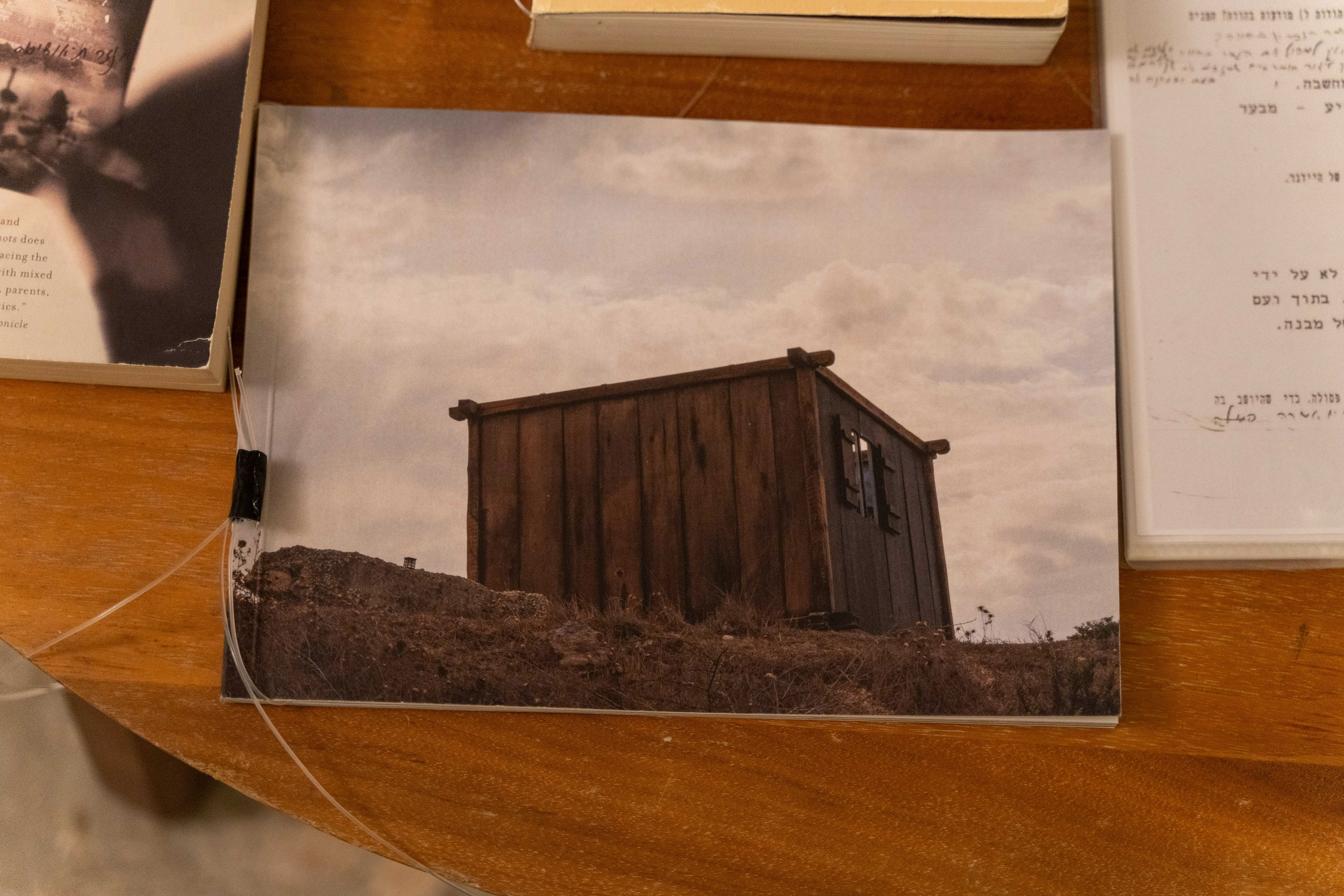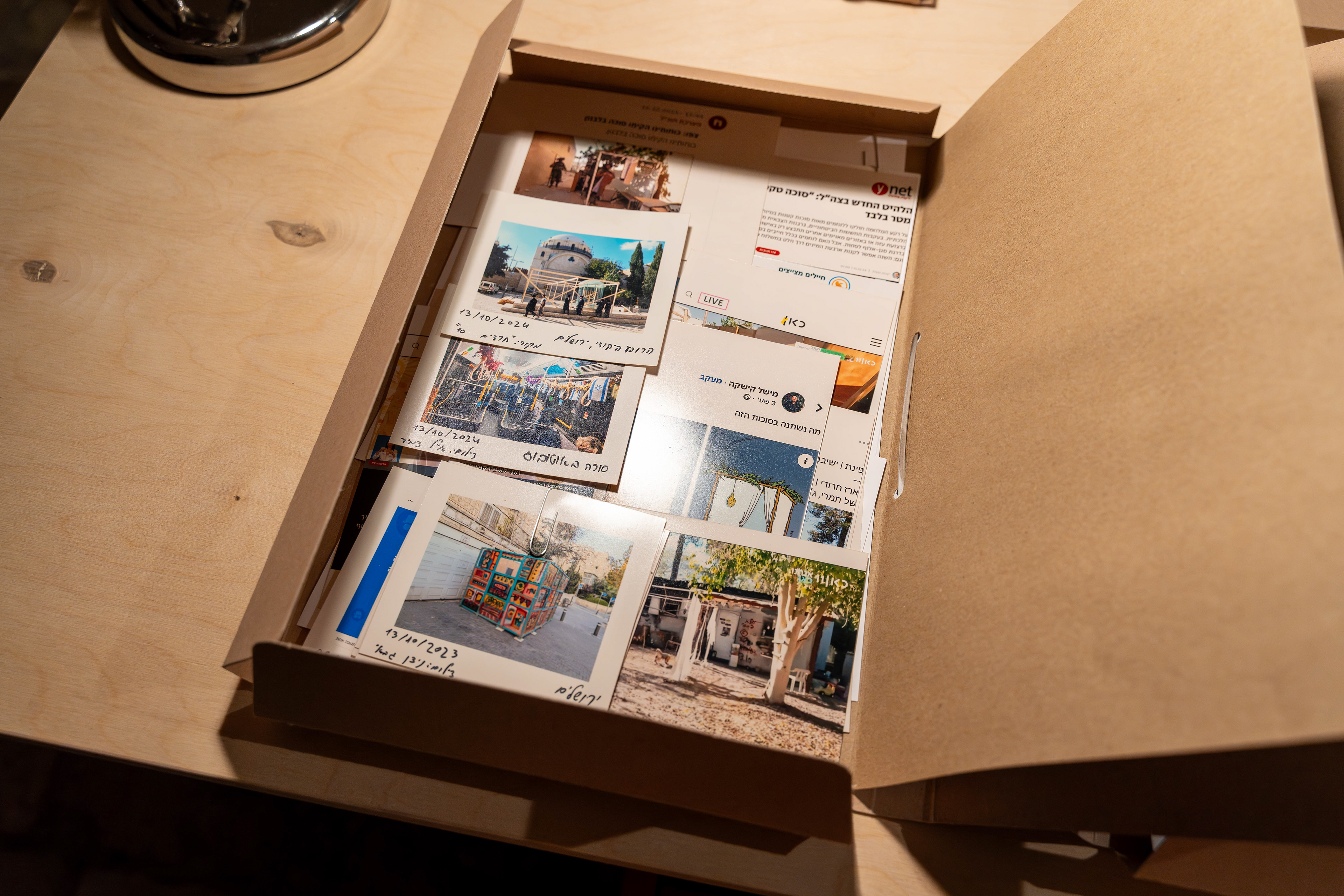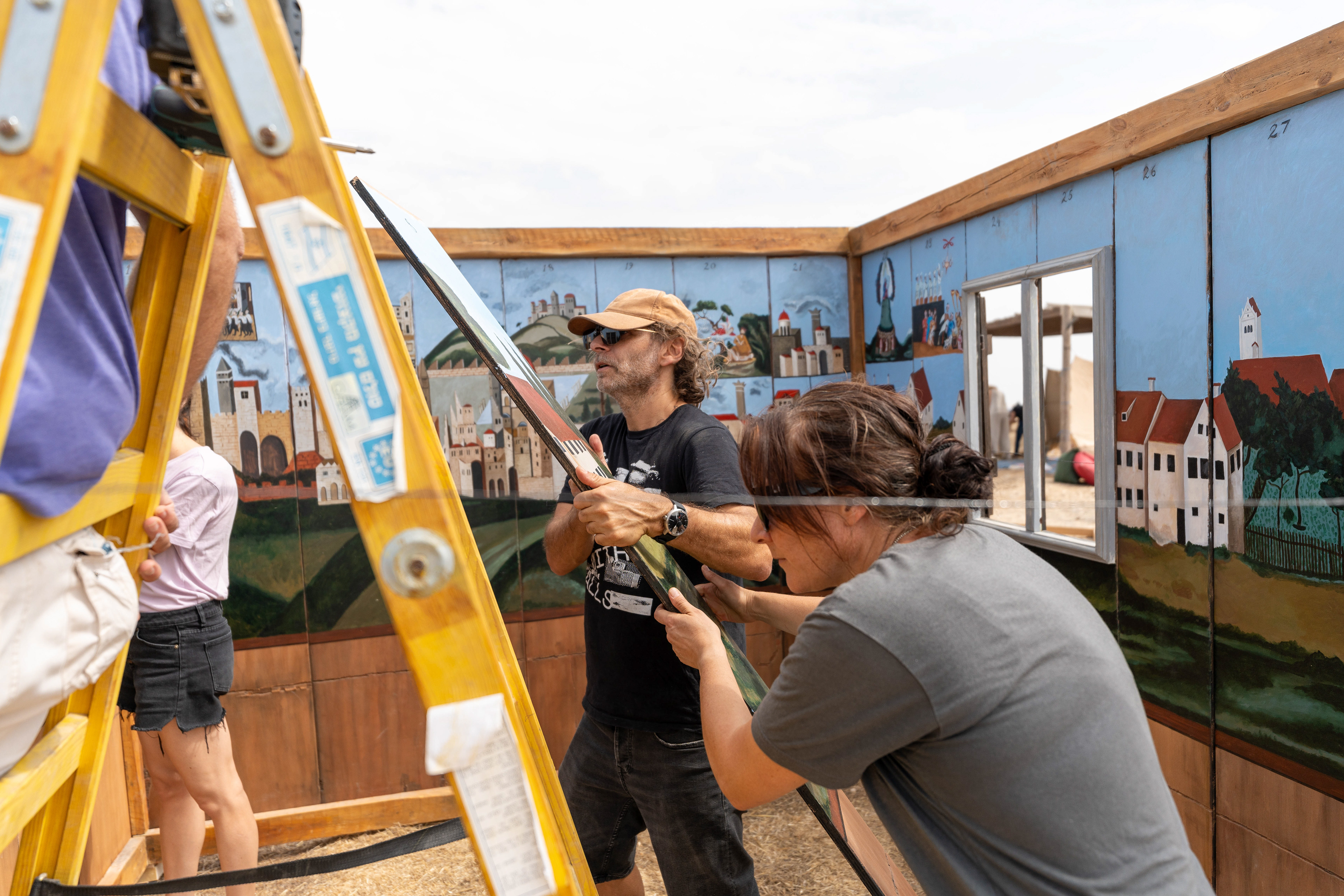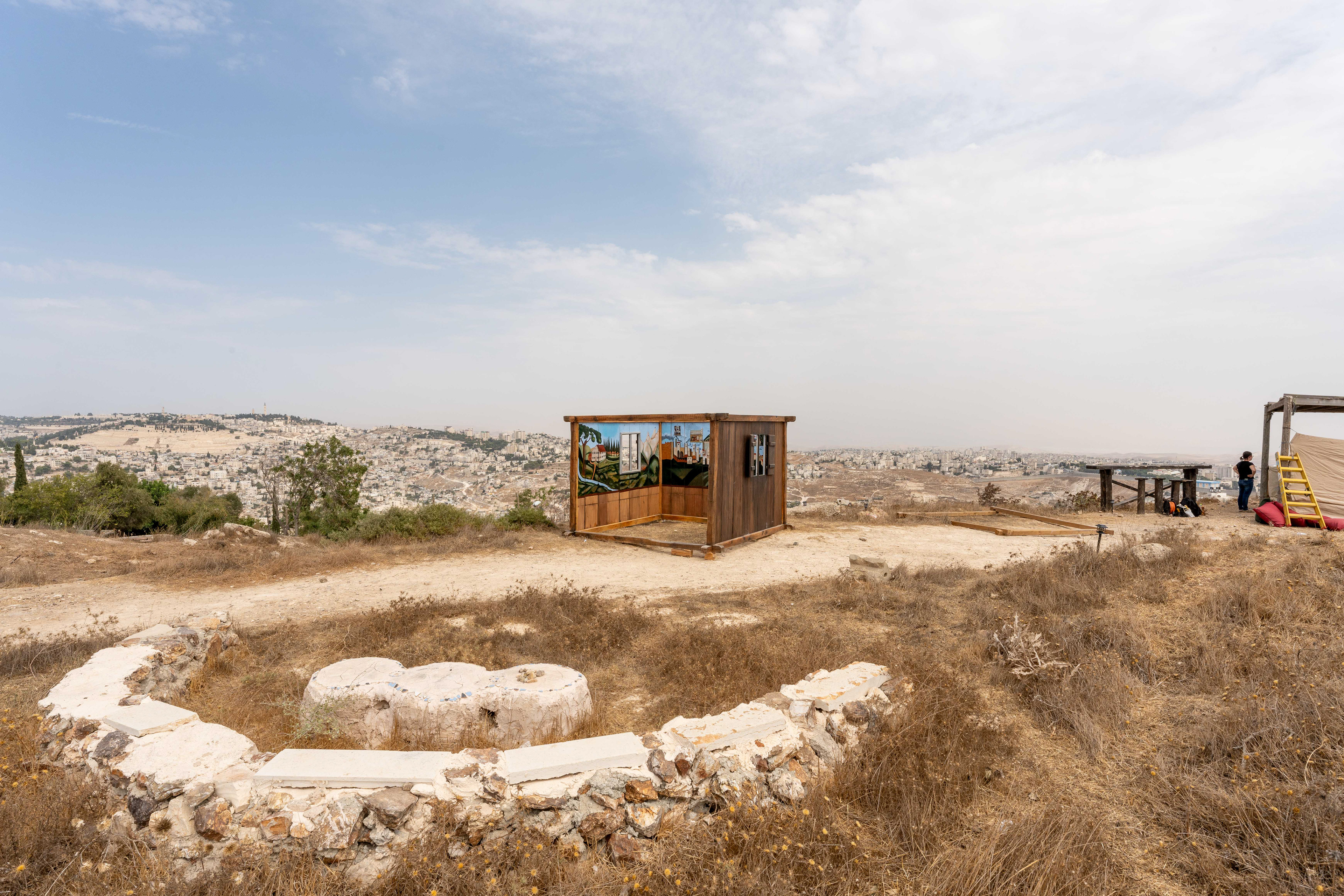22.10.2024-20.1.2025
Meydad Eliyahu, Michal Govrin, and the Sala-Manca Group
Curators: Sala-Manca | Photographer: Yom Omer |Reference room: Michal Tal
In this land. there was always somebody. Always coming from beyond the river, beyond the sea, and wandering back to exile. Nation after nation. Maybe that’s what the Jews wanted to expose. The place you let go of. A place of dream, of utopia, a place with another dimension.Like a Hut. You know, Sukkoth, the Feast of Tabernacles, is the most universal holiday. At that holiday, at the end of days, all seventy nations of the world will sit in a Hut of the skin of Leviathan. (Michal Govrin, Snapshots, Barbara Harshav, trans. ,Riverhead Books: 2007)
Twenty-four hours before is an exhibition that expands, recreates, and documents various processes that took place during the event Moshavat Sukkot (The Sukkot Colony) held October 5-6, 2023, Hoshana Rabbah Eve, on the hill known as Mitzpetel (Lupine Hill) in Jerusalem Moshevet Sukkot was an art event in the public space – an art dialogue between the Sala-Manca Group’s project during the Sukkot holiday, Michal Govrin’s book Snapshots (Eng. ed. 2007 of Hevzekim, 2002) and the struggle of the East Talpiot community of Mitzpetel to preserve the hill and prevent building a police station on it, in the wake of Rami Levy’s plans to build a tourist hotel at the location of the present police station.
The sukkah booth is the outcome of written instructions on how to perform the Biblical commandment of “You shall live in booths for seven days” as the Israelites lived in the desert following the Exodus from Egypt. The idea of establishing a “Sukkot Colony” on Lupine Hill resulted from the desire to realize the plan drawn up by Arch. Ilana Tzuriel, a fictional character in Govrin’s book. Tzuriel planned to establish a temporary monument to peace on the hill and a study of the laws of shmitta (the seventh year when the Land was to lie fallow), which was to be a space of encounter between Jews and Palestinians, between people and nations of different backgrounds to propose a different perception of land, locale, and concepts of ownership and transience as a possible alternative for a different kind of existence. However, the Gulf War put a stop to all of Tzuriel’s plans.
Twenty years after Govrin published her book, the Sala-Manca Group collaborated with the author and the Mitzpetel community to expand, update, and realize Tzuriel’s architectural design on the last day of the Sukkot festival. On the eve of Hoshana Rabbah, participants erected the Moshavat Sukkot monument to peace dreamed up by Tzuriel. The colony was comprised of a replica of the Deller Sukkah (a work of art that became a kosher sukkah at this event), the Kingston Sukkah, and the Mitzpetel Sukkah. Guided tours, workshops, and group sessions at the Moshavat Sukkot facilitated a discussion of timely issues, renewing the discourse on the concept of peace, and aroused thoughts on locale, permanence, preservation, and transience. On October 5, 2023, installation day, there were tours of the Hill, an artists’ meeting, and a writing workshop. Several of the artists slept in the sukkah overnight, and on the morning of October 6th, the temporary monument to peace was dismantled, twenty-four hours before…
The current exhibition documents the Moshavat Sukkot events while continuing it in an expanded version. One of the sukkot that originally stood in the 2023 Moshava – the Kingston Sukkah by Sala-Manca with paintings by Brian Hoad was installed “inside-out” in 2024 with the painting on the inside walls now exhibited as external walls. The former external walls were now covered with a new painting by Meydad Eliyahu depicting the Moshavat Sukkot of 2023 from the process of mounting, installation, and dismantling of the “colony.” The sukkot appearing in the painting that were not painted by Eliyahu were peeled off the Kingston Sukkah and made from its wood. The wood revealed in the new painting emphasizes what is absent.
In two other rooms, Ilana Tzuriel’s architectural office has been restored. Exhibited in the room are the designs and ideas that led her to design the Moshevet Sukkot. In another room of the “studio” are photographs by Yom Omer documenting the event as well as models of the Sukkot booths.
Room 4 is a reference room comprising a visual and textual archive by Michal Tal, graduate of the Hebrew University of Jerusalem’s Departments of Folklore and of Anthropology. Tal compiled the archive as part of the seminar on “Temporary Structures of Knowledge: The Sukkah as Performance.” in the Theatre Studies Department. The archive is devoted to the documentation of sukkot booths and their significance in 2023-2024. Sukkot booths forgotten and left behind after the massacre of October 7th were transformed from a temporary dwelling to a performative expression of collective transience in the continuing reality of the past year.
Technical direction and mounting: Eitan Haviv | Assistant Curator and Producer: Naama Mokady | Production Assistant and Manager, Exhibition Spaces: Gil Godinger | Text editor: Ronit Rosenthal | Arabic translation: Anwar Ben Badis | Graphic design: Maya Shleifer
Thanks to support from the Mifal HaPais Council for the Culture and Arts and the Jerusalem Municipality Culture Administration. Exhibit in association with the OWL Lab and the Department of Theatre Studies, Hebrew University of Jerusalem
Opening hours: Tue-Thur 12:00-17:00, Fri 10:00-14:00
Mamuta Art & Research Center, Hansen House







